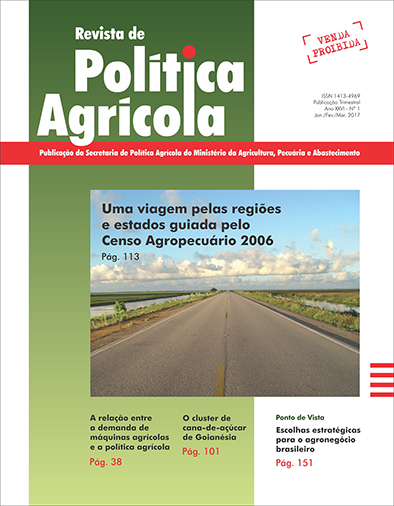The e evolution of milk in Brazil in five decades
Keywords:
Trade balance, consumption, milk production and price, productivity, trends.Abstract
The objective is to characterize the evolution of the national dairy sector in last five decades, but beginning with the history of milk since the time of the discovery of Brazil. Over the last 50 years the dairy sector has undergone several transformations and experienced distinct moments. The first official record of national milk production is from FAO in 1961 with 5.2 million tons. However, starting in 1974, the IBGE’s historical series began, extending to the present day with an estimated 35 million tons of milk in 2015. This growth represents a sevenfold increase of the level verified in the beginning of the series, with productivity as one of the main protagonists of such a performance. The national production is still insufficient to supply domestic consumption or to generate surpluses for export. In fact, it will be far from that if the consumption recommended by the WHO of 220 liters-inhabitant-year is considered. Import and export data for that period show that the country is a net importer, with sporadic exceptions between 2004 and 2008, but with a still timid participation in the international market. Price evolution shows a significant and persistent downward trend, indicating that productivity gains act positively in reducing costs and increasing competitiveness. The strongest argument supporting the significant evolution of domestic dairy farming comes from the market: from 1974 to 2015, while the actual price of milk received by the producer fell by 44.3% (from R $ 2.55 to R $ 1.13), milk production increased 494% (from 7.1 to 35 million tons). The only way to explain this apparent contradiction is resorting to the increase of productivity that in the same period grew 245.6% (from 655 to 1,609 Kg / cow / year). A magnitude still low, when domestic dairy herds with productivity indices above 3,200 kg / cow in lactation / year and data from the major dairy producing and exporting countries in the world are taken into account. Government interventions in the sector played a significant role in this evolution, with the end of price control being a strong ally to force modernization, further encouraged by the stability of the national economy after mistakes and successes of various economic plans. Trade liberalization and price stability create a new scenario in which the price of milk is defined by the interaction between supply and demand. Thus imperfections in the market force farmers to adjust to price fluctuations. To explain the behavior of farm-gate purchase price for milk in five decades, which is the focal point of this article, hypotheses are raised that point to possible correlations that explain the fall in the price of milk over time, as well as those that elevate it in the last 10 years. Trends, challenges and possible strategies to increase productivity and profitability of the productive sector are analyzed. Brazil’s attitude on the international stage is that of a country that has not yet done its homework and needs to change its strategy so that its products can be sold and not just bought.Downloads
Published
2017-08-09
How to Cite
Vilela, D., Resende, J. C. de, Leite, J. B., & Alves, E. (2017). The e evolution of milk in Brazil in five decades. Revista De Política Agrícola, 26(1), 5–24. Retrieved from https://rpa.sede.embrapa.br/RPA/article/view/1243
Issue
Section
Artigos Científicos


